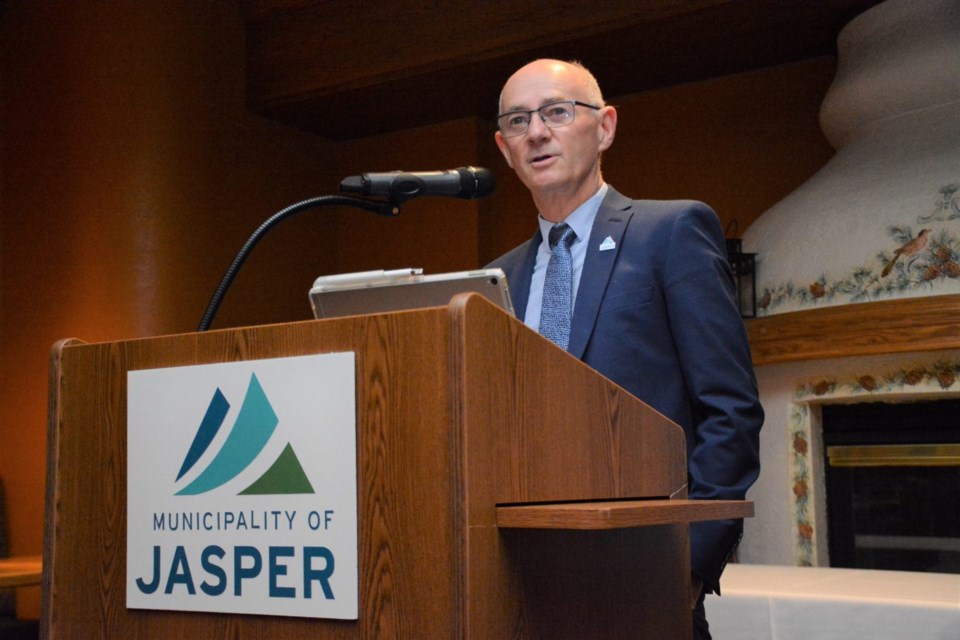Peter Shokeir | [email protected]
Jasper, Banff and Canmore are hoping the province will finally recognize the added costs that tourism-based communities face as a result of fluctuating visitor populations.
The three mountain towns began this lobbying effort at least a dozen years ago.
“It’s just a growing awareness of how our particular circumstances as tourism-based communities impact the bottom line for so many people,” said Jasper Mayor Richard Ireland.
“Although the tourism industry is a great industry, in lots of respects it is one in which the municipalities themselves wind up being engaged in a much different way.”
Jasper, Banff and Canmore support an annual average of four million visitors to Banff National Park and two million to Jasper National Park.
Ireland noted that when it comes to towns based around other industries such as mining and forestry, the community itself isn’t part of the product.
“We are obligated to improve and present that part of the product to the visiting population, and that comes with a cost, but it’s not recognized in the municipal realm by the provincial government,” he said.
“They just don’t see what we as tourism-based communities have to do to keep either ahead of the curve or just keeping up with attracting people to our community.”
The three communities first commissioned a report from consultant Ben Brunnen in 2010 that details this fiscal strain, but the issue remained ongoing.
“It just kind of bounced around for years, but a couple of years ago, we got energized, I guess, again, and the three bears of the three mountain communities decided that we would just take a stronger push on this long-standing thing, because we had never gotten it to resolution, but it had always been there,” Ireland said.
“The current focus is just a continuation of a really long approach to this.”
In late 2022, the communities engaged Brunnen to conduct a new analysis to more specifically identify the incremental costs the three communities face to provide services for visitors.
The analysis also explores how these costs compare to 33 other Alberta municipalities and the fiscal capacity of each municipality to address any additional costs.
The report found that the three mountain towns have above-average spending in categories directly related to supporting the visitor economy.
This includes public transit, bylaw enforcement, waste management, fire, public housing and wastewater treatment and disposal.
“We have to build and serve and maintain a wastewater treatment plant that meets the needs of as many as 20,000 or 25,000 people in the three-valley confluence at any time on a summer weekend,” Ireland said.
“And we have to do that for a tax base that is commensurate with a population of 5,000 people, so we have to be able to handle the flushes of thousands of more people than our resident base.”
The 2021 average per capita expenditures of 33 comparable municipalities in Alberta was $3,044, compared to $5,359 for Banff, $4,463 for Jasper, and $4,126 for Canmore.
Banff, Jasper and Canmore spent $20.5 million, $6.5 million and $15 million, respectively, to support visitor populations in 2021.
For Jasper, 32 per cent of its expenditures supported visitors.
Out of the 33 communities, Jasper spent the most on fire service, wastewater treatment and disposal, family and community support, and parks and recreation.
Targeting the average residential property taxes per dwelling could generate another $1.1 million in additional revenue, and paid parking has yielded an additional $675,000 per year for Jasper.
However, this would still not be enough to close the $6.5 million gap.
“We feel that we’ve pretty much maxed out the ability of local taxpayers to contribute,” Ireland said.
Ultimately, the three towns are asking the province to designate by legislation the notion of tourism-based communities.
That designation could lead to modifiers for existing programs or grants from the province to help cover the cost of supporting visitors.
Ireland also suggested the creation of a new grant from Alberta’s general revenues that would be specific to tourism communities.
So far, the towns have had meetings with the minister of Municipal Affairs and one meeting with the minister of Forestry, Parks and Tourism.
Ireland noted how tourism contributes $10 billion annually to the Alberta economy and that investing in tourism communities would fall in line with the government’s desire to grow the industry to $20 billion, essentially doubling provincial tourism revenues.
“Just from a return-on-investment perspective, it is so worthwhile for them to invest more in our anchor communities,” he said.
“I mean, this is where a bulk of tourism happens, at least on a proportional basis, and we’re the communities that probably best attract international visitation, and they want that influx of foreign money, because that’s always great for any local economy.”
The mayor added that many other jurisdictions already recognize the unique status of tourism communities, making Alberta an outlier in this regard.
“Our jurisdiction is at a competitive disadvantage, and if the province really wants to go where it says—and we accept that they do—then they need our help to get there.”
This article originally appeared in Peak Jasper, the 51����’s annual business magazine. or request your own copies for your home or business at [email protected]




